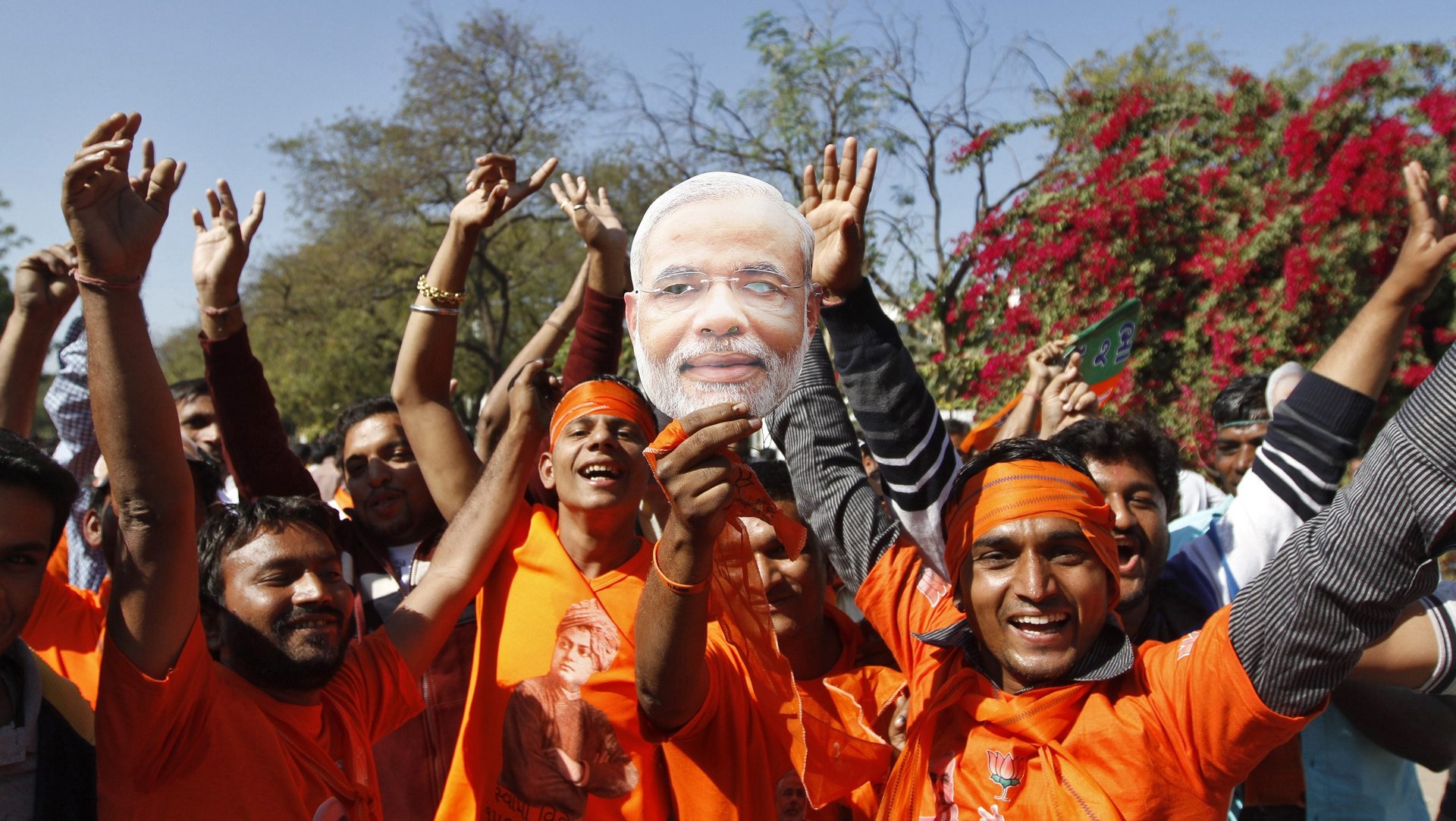This election made it clear: Modi is no “divider in chief”
Only a few days ago, as India’s mammoth election neared an end, Time Magazine dedicated its cover to India’s prime minister Narendra Modi, labeling him the country’s “divider in chief.”


Only a few days ago, as India’s mammoth election neared an end, Time Magazine dedicated its cover to India’s prime minister Narendra Modi, labeling him the country’s “divider in chief.”
Its catchy branding found nods amongst those who oppose the Bharatiya Janata Party’s rule (BJP) and outraged its supporters, who accused foreign media of building false narratives with the intention of diminishing India’s power and showing little respect of Indian voters.
The division that title refers to is the Hindu nationalism, which is at the core of the BJP’s ethos, and was at the centre of this campaign. Five years ago, the narrative built around Modi’s election campaign was one of development and wealth; this year, as the data on economic progress wasn’t impressive, the narrative doubled down on nationalism, peddling Islamophobia, fear of Pakistan, and communalism.
In a country that was founded on secularism, it seems reasonable to see Modi and his campaign as divisive. However, as the polls have spoken, the country isn’t divided: With a victory that surpassed even the shocking pro-Modi landslide of 2014, the BJP was handed a clear, sweeping mandate to run the country.
The so-called “saffron wave” (saffron is the color of the BJP and a sacred colour in Hinduism), many have commented, resembles rather a tsunami (or, the pun goes, a “tsuNaMo”), and with 67.11% voter turnout, the message couldn’t be clearer: India is not a divided country, it is a country fully behind Modi, his party, and their message.
In this respect, perhaps the most telling contest was fought in Bhopal, where Pragya Thakur, a Hindu supremacist accused of terrorism, who recently called Mahatma Gandhi’s killer a “patriot,” won her seat, and by a margin. Even Modi had criticised her words. But her victory shows the BJP’s base recognises itself in the ideals she embodies, or at the very least how much it’s willing to close an eye—or two—on an individual candidate for the greater good of seeing Modi in power.
In 2014, India was the first in a long list of countries to turn towards nationalism, various forms of xenophobia, and authoritarian leaders. In 2019, its election signal that this trend may not be going anywhere, and voters are so fully on board with the message that they are willing to wait longer for reforms and economic success and keep their trust in the strong leaders they chose.
A victory of this proportion is the product of many factors.
The BJP’s astute campaigning played a major role, as did its communications strategy. The Congress party’s inability to rally a strong base, form alliances, and be perceived as an appealing alternative was another. Fake news, the election commission’s loss of rigour, violence, the trouble at the poll—played their role.
But no factor is arguably as strong as Modi, the pull he has on Indians, their desire to re-elect the strongman, and his being the embodiment of a specific, nationalistic view of India—one that its majority, a Hindu majority, came out en masse to support.